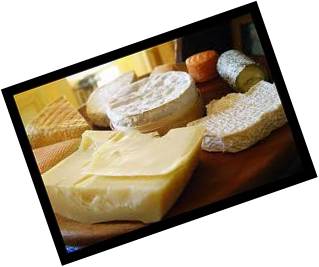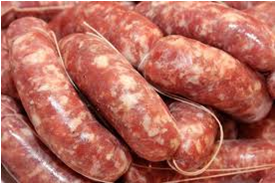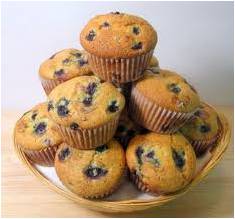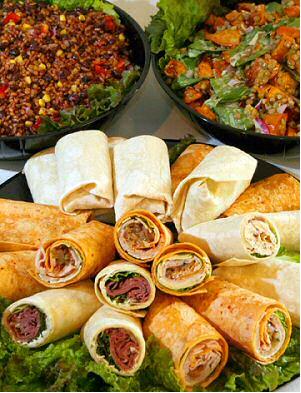Project Overview
Project structure
The main goal of TeRiFiQ is achieve significant binary reductions in both salt and fat or fat and sugar content in the most frequently consumed dairy products, meat products, bakery products and readymade sauces and meals in the EU. The breakdown of the objectives of each WorkPackage (WP) can be found below.- WP1
WP1: Reducing sodium content and improved fat composition in cheese
WP Leader: Dr. Jean-René Kerjean, Actalia
The objectives of the work package are:

- To reduce the reduction of the salt-level in three cheese-types (soft, semi-hard, hard cheese-types) from 0 to 30%, in relation with fermentations processes in cheese (task T1.1)
- To study the consequences of salt-optimisation on maturation processes leading to cheese quality, (lipolysis, proteolysis, lactates fermentations etc. (task T1.2)
- To study and measure of consequences on cheese quality , (task T1.3)
- To correct of the consequences of salt-level modifications on quality using different technological means :moisture control, fat level and fat composition control, incorporation of soluble proteins etc. (task T1.4)
- To improve of the unsaturated fatty acids content in the three types of cheese from 20 to 40% of the total fatty acids in cheese. (task T1.5)
- WP2
-
WP2: Reduction of fat and sodium in cooked and dry-fermented sausages
WP Leader: Dr. Eva Veiseth-Kent, Nofima The main objectives of WP2 are to develop production procedures for nutritionally improved cooked and dry fermented sausages, while maintaining the sensory perception and consumer acceptance of the original products and at the same time ensure food safety and quality. The reduction goal for cooked sausages is a 50% reduction in both sodium and fat content, while for dry fermented sausages the goal is a 30% reduction in sodium and 60% reduction in fat content.
The main objectives of WP2 are to develop production procedures for nutritionally improved cooked and dry fermented sausages, while maintaining the sensory perception and consumer acceptance of the original products and at the same time ensure food safety and quality. The reduction goal for cooked sausages is a 50% reduction in both sodium and fat content, while for dry fermented sausages the goal is a 30% reduction in sodium and 60% reduction in fat content.
The related tasks associated with these objectives are:
- Explore the application of new technologies (i.e. multiple emulsions, cryo-crystallised fat, and pre-drying operation) in sausage production
- Optimise of functional properties of salt and protein
- Investigate the impact of fat and salt reduction on water and salt transfers and formation of odour and flavour compounds
- Process optimisation in pilot-scale
- Evaluation of product quality and consumer acceptance
- WP3
WP3: Bakery products with reduced fat and sugar content
WP Leader: Dr. Markus Stieger, WUR
The main objective of WP3 "Bakery products with reduced fat and sugar content" is to reduce both the fat and sugar content of bakery products by up to 25% while keeping processing stability and fat functionality,sensory perception, texture properties and consumer acceptance of the products unchanged.
main objective of WP3 "Bakery products with reduced fat and sugar content" is to reduce both the fat and sugar content of bakery products by up to 25% while keeping processing stability and fat functionality,sensory perception, texture properties and consumer acceptance of the products unchanged.
WP3 has three sub-objectives.
- Sub-objective 3.1 is to develop model bakery products with reduced fat and sugar content with acceptable fat stability and functionality (task T3.1).
- Sub-objective 3.2 is to optimize the formulation of model bakery productwith respect to functional and sensorial properties (task T3.2).
- Sub-objective 3.3 is to up-scale the production of model products and to evaluation their nutritional quality, sensory performance and consumer acceptance (task T3.3).
- WP4
WP4: Reduction of fat and sodium in readymade sauces and meals
WP Leader: Dr. Peter Wilde, IFR The primary aim of WP4 is to reduce the fat content of sauces used in ready meals whilst maintaining comparable organoleptic properties and consumer acceptance. The primary technologies will be the use of multiple emulsions and cryo-crystallisation. Where possible, sodium reduction strategies will also be investigated using encapsulated or microcrystalline salt.
The primary aim of WP4 is to reduce the fat content of sauces used in ready meals whilst maintaining comparable organoleptic properties and consumer acceptance. The primary technologies will be the use of multiple emulsions and cryo-crystallisation. Where possible, sodium reduction strategies will also be investigated using encapsulated or microcrystalline salt.
Main Objective: Develop generic ready-made sauces and meals which are significantly reduced in fat (30%) and salt (20%), but retain comparable sensory characteristics to the original product.
- Sub-objective 1: Develop model systems to represent foods with varying fat and salt contents. (Task 4.1)
- Sub-objective 2: Incorporate fat and salt reduction strategies into model foods at both lab and pilot scale. (Tasks 4.1 & 4.2)
- Sub-objective 3. Determine sensory characteristics of pilot scale formulations and identify most promising strategies. (Task 4.3)
- Sub-objective 4: Develop real food products with defined quality characteristics including sensory and consumer (with WP5) and safety on selected foods. (Task 4.4)
- Sub-objective 5: Determine formulation and production costs of real foods for WP7. (Task 4.4)
- WP5
WP5: Optimising flavour release and perception changes induced by fat, sodium and/or sugar reduction
WP Leader: Dr. Christian Salles, INRA
The main objective of WP5 is the development of knowledge on mechanisms controlling in-mouth perception processes and cross-modal perceptual interactions. Transfer to WP 1 to 4.
WP5 has 3 sub-objectives :
- Sub-objective 5.1 is to find odorants, and combinations of taste and aroma enhancing sweetness or saltiness intensities in the different food models. (T5.1)
- Sub-objective 5.2 is to study in-mouth flavour release from food matrices in relation with food composition and temporal perception. (T5.2 and T5.3)
- Sub-objective 5.3 is to find relationships between structure / microstructure of food matrices, stimuli diffusion, temporal flavour release and perception. (T5.4)
- WP6
WP6: Development of reformulated products at industrial scale
WP Leader: Dr. Christophe Cotillon, ACTIA
The main objective of the work package is:
To transfer and demonstrate at industrial scale the applicability of the technologies developed from WP1 -4 in the industrial production process as well as consumption of reformulated products by consumer in real industrial situations.
The sub objectives of the work package are:- Selection of reformulated products able to be studied at industrial scale
- Technical adaptation to processing existing lines
- Comparison of outcomes in terms of quality, production volume
- Transferability to other products
- WP7
WP7: Technology transfer, dissemination and outreach
WP Leader: Maurizio Notarfonso, Federalimentare Serv
The objectives of WP7 are to:- Ensure maximum take-up of the project results by the food industry in particular SMEs throughout Europe;
- Related task: T7.2
- Ensure fruitful exchange with the scientific community, including individual scientists and initiatives; Related task: T7.1
- Inform European food stakeholders and consumers about the health benefits of consuming food products with lower fat/sugar/salt; Related Task: T7.3
- WP8
WP8: Project Management
WP Leader: Yohan Lecuona, INRA Transfert
The objectives of the work package are:- At the strategic level, it will pilot the project and address all unexpected situations, be these scientific, technological, societal or political.
- At the operational level, it will ensure that the project progresses in conformity with the work plan with regard to overall progress, milestones, deliverables, and planned resources.
- At the organisational level, it will manage the financial, logistics, information, coordination issues and ensure procedures are in place to ensure quality and conformity to EC rules, procedures and the Consortium agreement
News
TeRiFiQ Final Conference, 27th October 2015 at Milan EXPO, Italy. Presentations are online
Project results in a nutshell: TeRiFiQ Infosheets, available in English and many other languages
This project has received funding from the European Union’s Seventh Framework Programme
for research, technological development and demonstration
for research, technological development and demonstration


 Top
Top